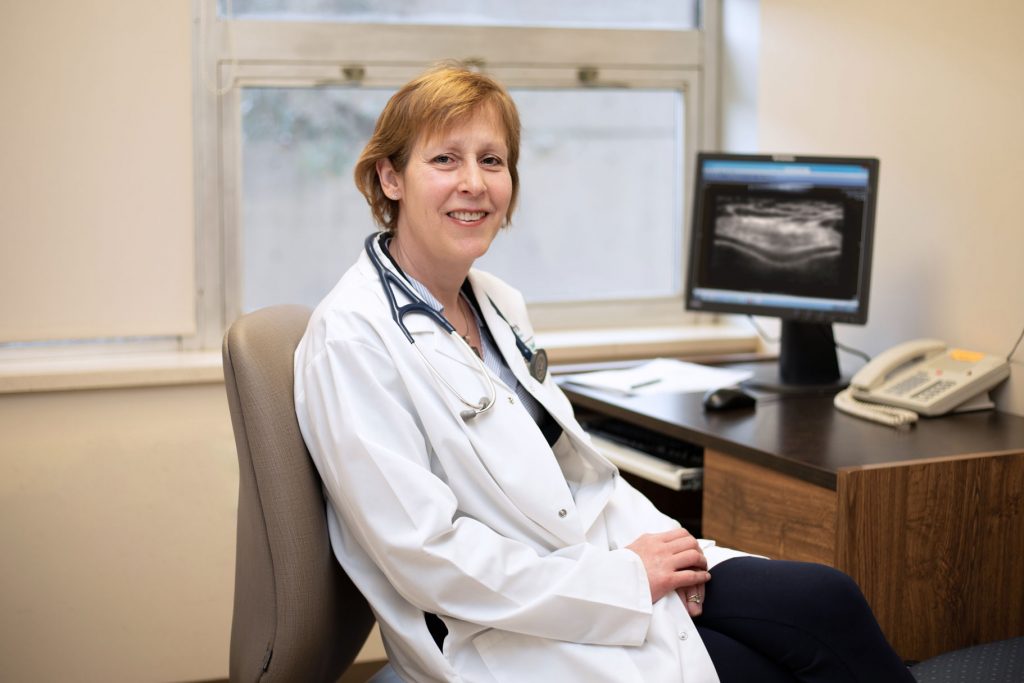Publication: Council of Academic Hospitals of Ontario | May 9, 2019
Rheumatoid arthritis (RA) is an auto-immune disease that affects approximately 1 in 100 Canadians. RA is caused by a malfunction of the body’s own immune system. The disease is characterized by joint inflammation that causes pain, stiffness, and swelling. Joint degradation occurs as a result of the immune system’s attack on the lining of the joints.
Early signs of RA can be vague, such as feeling tired and unwell, accompanied by sore joints. As the disease progresses, more joints may become affected. Detecting RA in its early stages is a major factor in the successful treatment of the disease. The window to achieve remission, thereby preventing permanent damage to the joints, is an estimated 6-12 months, and this narrow timeframe presents a challenge.
Dr. Maggie Larché is a clinician-researcher at St. Joseph’s Healthcare Hamilton. For years, Dr. Larché has been at the forefront of advancing the use of ultrasound in the diagnosis and treatment of RA. Dr. Larché also teaches musculoskeletal ultrasonography to medical trainees and clinicians in an effort to expand use of this diagnostic technique.
Research on the feasibility of ultrasound for RA diagnosis conducted by Dr. Larché and her colleagues is transforming the field of rheumatology in Canada. Though the technique may require longer clinical visits for patients at the point of care, its ability to enhance early detection and monitoring will help more Canadians start treatment sooner and avoid permanent damage to their joints. Not only does this reduce the health care resources needed to treat chronic RA, it assists in improving patient quality of life.
“We know that ultrasound can detect RA sooner than clinical methods, and an earlier diagnosis can have a significant impact on a patient’s recovery and overall quality of life,” explains Dr. Larché. “My colleagues and I have promoted the use of ultrasound in diagnosing and monitoring patients with RA, as well as increased the use to ultrasound training for health care providers in Canada.”
Overall, there are many advantages of using ultrasound over other imaging methods. Ultrasound is a non-invasive, radiation-free, portable, and inexpensive tool for diagnosing RA. In addition, diagnosis occurs in real-time with the patient, unlike an MRI or CT scan.
“I was diagnosed with RA in my hands. The treatment for RA involves injections to reduce the inflammation that causes pain. Her use of ultrasound to pinpoint the problematic spots of my hands allows her to find the best place for each injection, improving the effectiveness of the treatment. Dr. Larché has given me the use of my hands, which has greatly improved my quality of life,” said Margaret Clark, patient and research participant.
St. Joseph’s Healthcare Hamilton is one of Ontario’s 23 research hospitals that contribute to a healthier, wealthier, smarter province. Look for other RESEARCH SPOTLIGHT posts on our Healthier, Wealthier, Smarter blog or join the conversation about why health research matters for Ontario on Twitter, using the hashtag #onHWS.

